The Battle of Millstone in central New Jersey on 20 January 1777,[1] is a “local interest” battle, the kind that is often known only to locals and specialists, but on closer examination permits greater insight into other facets of the American Revolution. By one account, there were 1,331 military engagements in the war throughout the colonies.[2] In New Jersey alone, at least 500 separate military incidents have been identified.[3] We need not belabor the definition of “engagement;” if shots were exchanged or the threat of death was real, then each was very real to the individuals involved. Each of these engagements may seem less significant in itself, though often people died or were wounded; when aggregated, their costs and results rival most of the larger-scale and more well known battles. The Revolutionary War was not a few major rainstorms; it was a steady drizzle of engagements between local and “national” forces on both sides with the occasional downpour. Millstone reminds us of that.
The Battle in Context: The Forage Wars
Following the American victory at Princeton on 3 January 1777, Washington’s forces were moving northward towards Morristown, and British forces were centered around New Brunswick; Millstone lay in between and was ripe for foraging. This aspect of the war has not been given the attention or focus it deserves; the attempt to gain supplies and limit the enemy’s access to supplies consumed both sides.[4] This is evidenced by a series of correspondence from Washington in January. Indeed, he deemed the British attention to foraging activity evidence of their desperation and distress.
On 12 January 1777, Washington wrote to the Continental Congress that “the Enemy have made no Move since my last, by every Account they begin to be distressed, particularly for Forage, of which there is little or none remaining in the small Circle they possess, except Salt Hay . . . Genl. Heath . . . was beginning to move down towards Kingsbridge . . . This must add to the distress of the enemy, who will by this Measure be deprived of the Subsistence they formerly drew” from parts of New York.[5] On 14 January Washington again wrote Congress from his headquarters in Morristown that the British were at “Amboy and Brunswick,” and “our Accounts still confirm their want of Forage, which I hope will increase.”[6] When he did not hear back, Washington wrote again on 17 January, advising Congress that the British were “endeavouring to draw in all the Forage they can get, in the course of which, they have daily Skirmishes with our advanced parties.”[7] Also on the 17th, he wrote to Major General Joseph Spencer, observing among other things that “the Enemy, by being drove back from most part of the province of Jersey, on which they depended for Subsistence, are much distressed for Provision and Forage, and unless they make a push to extricate themselves, they must in a Manner perish this Winter.”[8]
Washington’s perception was correct. Charles Stedman, a British commissary officer who served in the war and later wrote a credible account, noted that despite the superior numbers at his disposal, Howe was essentially confined to New Brunswick and Perth Amboy (as they are now known), and suffered greater losses by attrition in these skirmishes than if he had sought to attack outright. Washington’s strategy allowed him “to harass the English greatly. The excursions which the garrison of Brunswick made for forage, were often attended with fatal consequences; and as the American army had extended their line of cantonments from Morris Town to Woodbridge, within three miles of Amboy, the provisions that were forced to be conveyed by land to Brunswick were often cut off by parties of the enemy, who were always on the watch, and to whom intelligence was regularly conveyed by thosepersons who inhabited the space of ground between Amboy and Brunswick.”[9] Stedman notes the plunder of the countryside by the British but, without condoning it, also notes the “expences of the extraordinaries of the army were rapidly increasing, and ultimately swelled to a most unparalleled and alarming amount.”[10]
The Battle
On 20 January 1777, General Philemon Dickinson led about 400 New Jersey and 50 Pennsylvania militia in battle, defeating about 500 British Regulars and Hessians under Lieutenant Colonel Robert Abercromby. General Dickinson wrote a very brief account of the experience in a letter to Colonel John Nielson dated Raritan, New Jersey, 23 January: “chiefly our militia I attacked a foraging party near V. Nest Mills consisting of 500 men with 2 field pieces, which we routed after an engagement of 20 minutes and brought off 107 horses, 49 wagons, 115 cattle, 70 sheep, 40 barrels of flour – 106 bags and many other things, 49 prisoners.”[11]
Millstone at the time was known as Somerset Courthouse, about eight miles west of New Brunswick. Today the town is known as East Millstone, in Somerset County.
On 16 July 1776, the Continental Congress had called for 2000 militia men for a “flying camp;”[12] two companies came from Somerset County.[13] Certain militia received “an Express from G.W. ordering us to go towards Boundbrook along Raritan,” and apparently made it there by 15 January. They moved twice more, and were at Van Nostrand’s on Saturday the 18th. A militiaman wrote:
Staid here in peace till Monday morning we then received an Alarm and were ordered to march to Boundbrook, we arrived there between 11 and 12, then hearing that the Enemy was plundering at Millstone, we immediately marched for that place, being joined by a considerable body at Boundbrook we marched on till we passed Raritan Bridge, hearing several Cannon fired, while on the way. After crossing the Bridge, the Battallion I was in was taken off for the left wing, I crossed Millstone, some distance below the Bridge, wading through the water, more than knee deep. We immediately marched towards the road, and fired upon the Baggage Guard, who were retreated that way. They immediately left horses wagons and plunder, and returned with the greatest precipitation. The main body of the Enemy lay just over south of the Bridge. Before we crossed the River below, our main Body began the Attack at the Bridge with one Field piece and made the Enemy give way. They continued their fire upon the Enemy some time. Our wing, after driving the Baggage Guard, pursued on and flanked the Enemy. After a short engagement, finding ourselves greatly overpowered with numbers, we received General Orders to retreat, having had 1 man killed and 2 wounded. and we had taken 2 of the Enemy prisoners. We then retreated back to the River, lest our retreat should be cut off. But finding the Enemy did not pursue, we rallied again, with as many of our men as we could collect, and marched on towards the Enemy the second time; but when we came in sight of them, they got possession of an eminence in the End of a clear Field, with one or more Field pieces and poured down their Grape shot upon us briskly. Then finding it in vain to attack them with our little Body, under so great a disadvantage, we immediately retreated back and most of our men went over the River up into a clear field, to where our main Body had by this time collected. They all formed again, and came round over the Bridge, to take off the plunder. While the main Body were there forming and coming round, 6 of us that remained, thinking our main Body was quite gone off, set to taking off the baggage wagons by hand, down to the River. We had got off 2 with a great number of Bags, Chains, &c., and were going back for the 3d when our main body came up and soon took off the remainder. We then all came off with our plunder to Head Quarters. In this Engagement I could learn of but 3 men killed, besides wounded and prisoners. Though the Enemy had laid their scheme well to get a great quantity of plunder, yet fortunate for us, they were sadly disappointed. They sent 400 men in the morning to Boundbrook, to decoy our army from their other party who were plundering at Millstone, that they might have time to get off their plunder. After showing themselves a short time at Bound brook, they went off, but where I have not heard.
Our army got so timely to Millstone that by what I can learn we got 1/2 of the Enemy’s wagons, and plunder; we took several of their English wagons, and others, likewise a great number of new Sacks of wheat, flour, meat, Horses, Cattle, sheep, Hay and several other Articles, which we found scattered every way along the streets and through the woods, where they had thrown them away, in their haste…[14]
Samuel Sutphin (sometimes spelled Sutphin), a New Jersey slave who fought in the war, later gave his own account:
In the spring following, probably March, a party of the enemy from N. B. came out to Van Ess’ mills on the Millstone. A party of militia under Lieut. Davis was stationed near the two bridges, when an express rider on a black horse from Col. Frelinghuysen gave tidings of the enemy at V. Ess’ mills. I piloted Davis’ Co. and as many others as we could assemble to a fording place over the S. branch, and hurried on to the mills. They had plundered the mill of grain and flour, and were on their way back to Brunswick, but had not got out of the lane leading from the mill to the great road. We headed them in the lane. The team laden with the flour was the first we fell in with; the lane, 100 yards, was filled with 4-horse teams. Davis ordered us to fire, and then we shot part of the 1st team, which stopped the whole drove. The drivers left their teams and run. A guard escorting the teams made their escape. We took, as was said, about 40 horses, and all the waggons, about 10, which were all sent off under an escort to Morristown.
A party of Hessians, about 1 company (70), an escort for these teams from Brunswick, was discovered secreted behind a hedge with some 4 or 5 field pieces. They fired upon us and retreated. We followed on a piece, but Lt. Davis ordr’d us to retreat. Davis’ Capt. Westcott from Cumberland had been left sick at Guysbert Bogert’s, where he died, and was taken back to Cumberland Co. There was a large body of militia out, and Gen’l Dickinson commanded. The firing was principally across the river at the bridge. I was out on this alarm but one day. We mounted guard along the branch above the 2-bridges almost every night; nearly all this winter and spring on guard duty. [15]
Captain Johann Ewald, the articulate Hessian diarist, does not note this exchange on the 20th, but did note an exchange on 13 January at Bound Brook and Quibbletown, after which “the jäger post duty now became quite serious, since Bound Brook and Quibbletown were less than an hour’s march away. The teasing now occurred daily, and when they did not visit us, we rendered the honors to the Americans. Not only did the men have to stay dressed day and night, but they had to be kept together, the horses constantly saddled, and everything packed.”[16]
British engineer Lieutenant General Archibald Robertson’s diary entry for 20 January 1777 noted the engagement based on second hand reports. Interestingly, and despite Washington’s often critical comments about the performance of militia units, the reports reaching Robertson spoke so well of the American militia units that they were mistaken for the Continental Army:
Lieutenant Colonel Abercromby with 500 men went on a foraging party towards Hillsborough. Part of this Corps was attacked by the Rebels, which occasion’d such disorder Amongst the Waggon Drivers that 42 Waggons were left behind.[17]
An anonymous letter published in the Pennsylvania Journal; and the Weekly Advertiser (Philadelphia) on 29 January 1777 gives a slightly different but more detailed account:
Last Monday a party of Jersey Militia, consisting of about 400, and about 50 of the Pennsylvania Rifle-Men, marched to attack a body of the enemy, consisting of about 600, who were posted at a bridge at Millstone river, near Abraham Vannest’s mill, which is two miles from Somerset Court House. In order more effectually to prevent our men from crossing, the enemy had placed three field pieces on a hill, about 50 yards from the bridge; when our men found it impossible to cross there, they went down the river, broke through the ice, waded across the river up to their middles, flanked the enemy, routed them, and took 43 baggage waggons, 104 horses, 115 head of cattle, and about 60 or 70 sheep. We lost 4 or 5 men. – We took 12 prisoners, and from the best accounts the enemy had about 24 or 25 killed and wounded. A man who came from Brunswick this afternoon says, the enemy allow that they lost 35 or 36 men, but say the rebels lost 300. There were not more than 400 of our men crossed the river: The enemy report, that they were attacked by 3000 of General Washington’s troops there, and were absolutely certain they were not Militia, they were sure that no Militia would fight in that way.[18]
Finally, we have Washington’s report to the Continental Congress, 22 January 1777, which complimented the militia:
I have the pleasure to inform you, that General Dickinson, with about 400 Militia, has defeated a foraging Party of the Enemy of an equal number, and has taken forty Waggons, and upwards of an hundred Horses, most of them of the English draft Breed, with a great number of Sheep and Cattle, which they had collected. The Enemy retreated with so much precipitation, that General Dickinson had only an opportunity of making nine prisoners, they were observed to carry off a good many dead and wounded in light Waggons. This Action happened near Somerset Court House, on Millstone River. Genl. Dickinsons behaviour reflects the highest honour upon him, for tho his Troops were all raw, he lead them thro the River, middle deep, and gave the Enemy so Severe a charge, that, although supported by three field pieces, they gave way and left their Convoy.[19]
This engagement has also been referred to as the Battle of Van Nest’s Mill. While we can ascertain the general area of where the battle occurred, there is some disagreement as to its precise parameters.
A map of the British outposts between Burlington and New Bridge, New Jersey in December 1776 shows a place identified as “Vaness” around the junction of the “Millstone Creek” and “Bound Brook,” as well as what is the Raritan River. This is apparently a reference to Van Nest’s Mill. A bit further to the west, along the Millstone Creek, Schenk’s Mill is also identified as “Schenk.”[20] Ewald’s map, “Plan of the Area of Bound Brook, 20 April 1777,” shows the Millstone River from Kingstown (now Kingston), and also shows Somerset Courthouse. He does not identify the Van Nest’s Mill by name, but does show a mill at the location of what seems to me to be the Wilbur Smith Bridge, before the intersection of the two rivers.[21]
This area of the state is heavily wooded with farmland and fields in between. For better or worse, part of the battlefield area has been dramatically changed as a result of the construction of the Delaware and Raritan Canal, built between 1830 and 1834. It exists today almost entirely intact, with portions at Trenton turned into a highway and not completely accessible or in existence at New Brunswick. In January, there would of course have been no growing crops. The land is mainly flat.
However, there is some disagreement over the precise location of the Van Nest mill. Glenn and Georgeanne Valis’s research led them to conclude “it is unclear . . . whether the Americans waded the [sic] either the Millstone or Raritan rivers, but I suspect they waded both, in separate parties, as the junction of the rivers is downstream of the site of the Van Veighton or Raritan bridge. By moving in from different directions, they would have a better chance of outflanking the enemy, as they did. The British and Hessian troops evidently did not expect them to cross except at the bridge, over the Millstone near Van Nests Mills.”[22] Another website with apparently local sources claimed the Van Nest’s Mill was across the Millstone River on the eastern side near the Manville-Weston Causeway, next to the Wilbur Smith Bridge, but one of the comments disputed that, siting the battle “more or less across from the Sacred Heart Cemetery” about a half mile up the river.[23] Elizabeth Menzies, in her book Millstone Valley, provides a photograph (as of 1968) of a mill at Weston that she says was the target of the British for “its flour and stores,” and where they “were repulsed by General Dickenson’s Continentals on January 21 [sic], 1777.[24]
All that said, there seems to be consensus that the battle was fought in the Millstone area (between the Sacred Heart Cemetery and Weston Causeway area), along the Millstone River and not as far north as the Raritan River, though some foraging a few days prior to the battle may have occurred along the Raritan rather than in the vicinity of Van Nest’s Mill. In any event, the Americans prevailed, losing four men and capturing nine prisoners, and taking 40 wagons and 100 horses.[25] As noted above, British casualties were estimated at 24 or 25 killed or wounded.
With all of the above, if we do not worry as to exactly placing the action, we can see the terrain and contours of where the battle occurred.
Washington crossed in the general area some miles to the south, at Griggstown, in January 1777 on the way to Morristown. We are looking at the Millstone River at Griggstown. On the opposite side of the bridge is County Route 533, which we will follow up to Millstone.
We continue north on Route 533 past Blackwells Mills, until we come to the historic location of Millstone. Continuing north, we come to the intersection of County Routes 533 and 514, where a stone plaque marks the site of the Somerset Court House. We see the stone marker on the lower right; the site is now private property.
We can cross the bridge here along Amwell Road (Route 514) and see the Franklin Inn, which was originally the Frederick Van Liew farmhouse, built around 1734. It was reportedly used by Cornwallis as a headquarters in 1777, shown here.
Continuing north on Route 533, we come to the Sacred Heart Cemetery. Here is a view of the Millstone River at that area, looking across to the eastern bank.
Just a little way up from the Sacred Heart Cemetery is the Central Jersey Airport on the western side of the Millstone River. We get a feel for the flatness of this area.
As noted, there seems to be some disagreement as to the exact location of the battle. Here is a view of the Millstone River from the bridge crossing it at the current Weston Causeway, showing the eastern bank on the right and the western bank on the left. I am standing on the bridge; to the right, on the eastern bank, is where some have identified the Van Nest’s Mill, and which area is consistent with Ewald’s identification on his map titled Plan of the Area of Bound Brook, 20 April 1777, which shows the location of a mill and “Manse van Esten” between the convergence of the Raritan and Millstone Rivers on the one hand, and the Somerset Court House on the other.
Regardless of the exact location or dates of the action, or the identification and locale of particular mills, we know we are within the perimeter of the engagement. Despite the construction of the canal, the expansion of the roads, build up of the towns, replacement of bridges, and the irrevocable forward surge of time, we can look at the Millstone River and imagine the sounds and sights of this engagement swirling around us.
We can gain insight into two facets of the Revolutionary War from Millstone. The first is recognition of many of the “second tier” of Revolutionary War generals and officers such as Dickinson, whether they were in command of militia or Continental soldiers, or serving in the British army. They are often overlooked, or only mentioned in passing, in the histories of the war (for example, there is no mention at all of Dickinson in John Ferling’s Almost a Miracle: The American Victory in the War of Independence) and yet they were an integral part of the ongoing push and shove of the war, particularly in New Jersey. The second insight is an understanding not only of these numerous engagements that, like tiles in a mosaic, formed a larger picture of the war, but how much they mattered to Washington and others. This particular battle – small by most standards, and hardly in itself dispositive of anything – nonetheless was important enough for Washington to write to the Continental Congress and mention.
Perhaps this leads to the greatest significance of the engagement, beyond the immediate logistical gains: it helped Washington appreciate the value of a well-led militia. The militia was a key part of the war, and this is one instance where Washington’s usual disdain for them was held in check and he gained an appreciation of their value under proper leadership. Millstone helps us remember that this war was not an abstraction. It was not a cartoon collection of a few significant battles marked by blue and red arrows. It was an in your face, water up to the waist, individual endeavor by so many whose names have been lost to history. Four Americans likely died here – more than were killed at the First Battle of Trenton.
[ALL IMAGES courtesy of author]
[1] The original sources cited give 20 January 1777 as the date of the action. Some sources have noted action on 22 January, and it may be that the skirmishing continued over the period of 20 through 22 January 1777. See Mark Boatner III, Encyclopedia of the American Revolution (New York: David McKay Company, Inc., 1966), 1017.
[2] Howard Peckham, The Toll of Independence (Chicago: University of Chicago Press, 1974), 130.
[3] David C. Munn, Battles and Skirmishes of the American Revolution in New Jersey (New Jersey Geological Survey, 1976) (on line athttp://www.state.nj.us/dep/njgs/enviroed/oldpubs/battles.pdf, accessed 4 October 2014).
[4] For a brief overview of the 1777 “Forage War” in New Jersey, see Donald N. Moran, New Jersey and the 1777 Forage War, (on line at http://www.revolutionarywararchives.org/newjerseyforage.html, accessed 4 October 2104).
[5] Washington to Continental Congress, 12 January 1777, George Washington Papers at the Library of Congress, 1741-1799, Series 3a Varick Transcripts (“Washington Papers”). The home web page for access to the letters is http://memory.loc.gov/ammem/gwhtml/gwhome.html.
[6] Washington to Continental Congress, 14 January 1777, Washington Papers.
[7] Washington to Continental Congress, 17 January 1777, Washington Papers.
[8] Washington to Spencer, 17 January 1777, Washington Papers.
[9] Charles Stedman, The History of the Origin, Progress, and Termination of the American War (London: 1794), 1:241, on line at http://books.google.com/books?id=bmQFAAAAQAAJ&printsec=frontcover&dq=charles+stedman+%22history+of+the+origin%22+volume+1&hl=en&sa=X&ei=H2kwVNGkDea1sQSQw4GwDw&ved=0CCYQ6AEwAA#v=onepage&q=forage&f=false (accessed October 4, 2014).
[10] Stedman, The History of the Origin, Progress, and Termination 1:242.
[11] This letter is cited by Glenn and Georgeanne Valis as from “Rutgers library.” Their web page, The Battle of Millstone, is at http://www.doublegv.com/ggv/battles/millstone.html (“Valis”) (accessed 4 October 2014).
[12] The flying camp was meant to be a flexible unit that would move about, whereas the New Jersey militia was meant for local defense. Washington Irving, Life of George Washington, Vol. II (London: Henry G. Bohn, 1856), 527, on line at http://books.google.com/books?id=SlNDAAAAYAAJ&pg=PA527&dq=george+washington+%22flying+camp%22+%22new+jersey%22+militia&hl=en&sa=X&ei=lbswVPntKMupyASpgIKYDQ&ved=0CCYQ6AEwAA#v=onepage&q=flying%20camp%22%20%22new%20jersey%22%20militia&f=false (accessed 4 October 2014).
[13] Thomas Allen Glenn, William Churchill Houston 1746-1788 (Privately printed 1903), 21, on line at http://books.google.com/books?id=fwJZAAAAYAAJ&printsec=frontcover&dq=%22william+churchill+houston%22&hl=en&sa=X&ei=OLQwVPm9F83GsQTN_4CQBA&ved=0CCYQ6AEwAA#v=onepage&q&f=false (accessed October 4, 2014). Also cited at Valis.
[14] Glenn, William Churchill Houston, 26-28. There is some lack of clarity if the writer was the mathematics professor at then “Princeton College,” the militia officer William Churchill Houston, or someone serving under him. The journal writer reported that in the week before the battle at Millstone, the orders came in from Washington. While some on line sources attribute his journal to Houston, Glenn’s book refers to an anonymous soldier serving under Houston who described their being summoned to intercept a party of foraging enemy soldiers.
[15] A. Van Doren Honeyman, Somerset County Historical Quarterly Vol III, 1914 at 188. Also cited at Valis.
[16] Johann Ewald, Diary of the American War: A Hessian Journal, translated and edited by Joseph P. Tustin (New Haven: Yale University Press, 1979), 52.
[17] Harry Miller Lydenberg, ed., Archibald Robertson, Lieutenant-General Royal Engineers: His Diaries and Sketches in America, 1762–1780 (New York, 1930), 122. Also cited at Valis.
[18] Quoted in http://founders.archives.gov/documents/Washington/03-08-02-0135
[19] Washington to Continental Congress, 22 January 1777, Washington Papers.
[20] Library of Congress, Map of British Outposts Between Burlington and New Bridge, New Jersey, December 1776, on line at http://www.loc.gov/item/gm71002189/ (accessed 6 October 2014). Another interesting map of the area is maps: http://www.westjerseyhistory.org/maps/revwarmaps/hessianmaps/index2.shtml (accessed 8 October 2014).
[21] Ewald, Diary of the American War, 59.
[22] Valis.
[23] Seehttp://manvillehistory.com/2009/06/11/van-nests-mills/ (accessed 6 October 2014). Another commenter on the site suggests there were several mills there.
[24] Elizabeth G. C. Menzies, Millstone Valley (New Brunswick: Rutgers University Press, 1968), 86. She relies on Ralph Voorhees, apparently a long-time native and descendent of a Revolutionary-era family.
[25] Peckham, The Toll of Independence, 29. See also http://www.millstoneboro.org/about/millstone-history/2 (accessed 7 October 2014). A good history of Hillsborough/Millstone begins at http://www.millstoneboro.org/about/millstone-history.






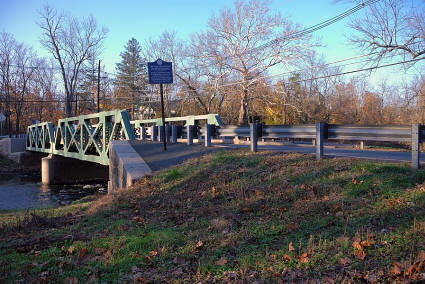
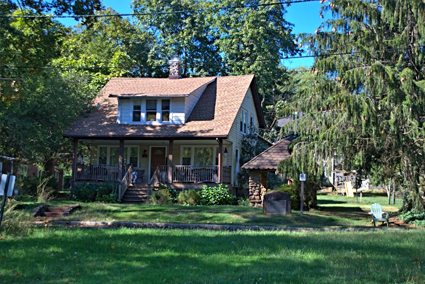
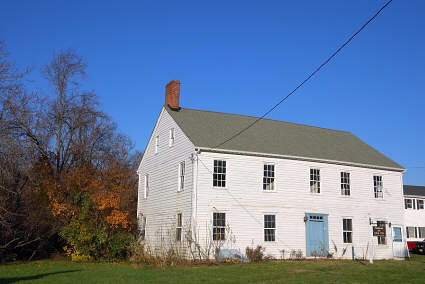
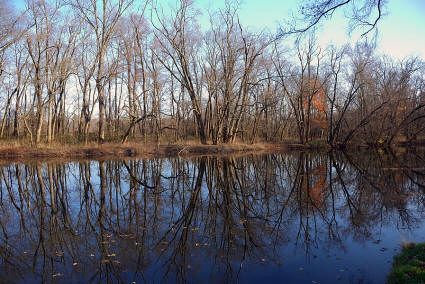
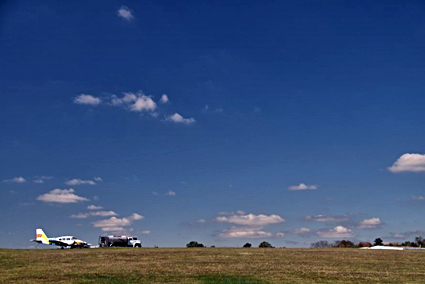





2 Comments
This article is excellent on a number of levels: coverage of another “local” engagement, well-researched and illustrated, astute conclusions and very well written. There seems to be a rash of local engagement articles which not only fill in the blanks between the more well known and well worn battles but add to the rich military, social and cultural history significance of the War. In reading Steve Richman’s profile, I was delighted to see that he had a website with interesting content (text and photos) about the War which I recommend. 1777, “The Year of the Hangman,” continues to be the most interesting period of the War and this article underscores that the “Forage Wars” were every bit as important as the fighting.
For more on the action see:
“`The road appeared to be full of red Coats …’: The Battle of Millstone, 20 January 1777: An Episode in the Forage War,” Military Collector & Historian, vol. 62, no. 1
(Spring 2010), 24-35. http://www.scribd.com/doc/123985060/%E2%80%9C-The-road-appeared-to-be-full-of-red-Coats-%E2%80%A6-An-Episode-in-the-Forage-War-The-Battle-of-Millstone-20-January-1777